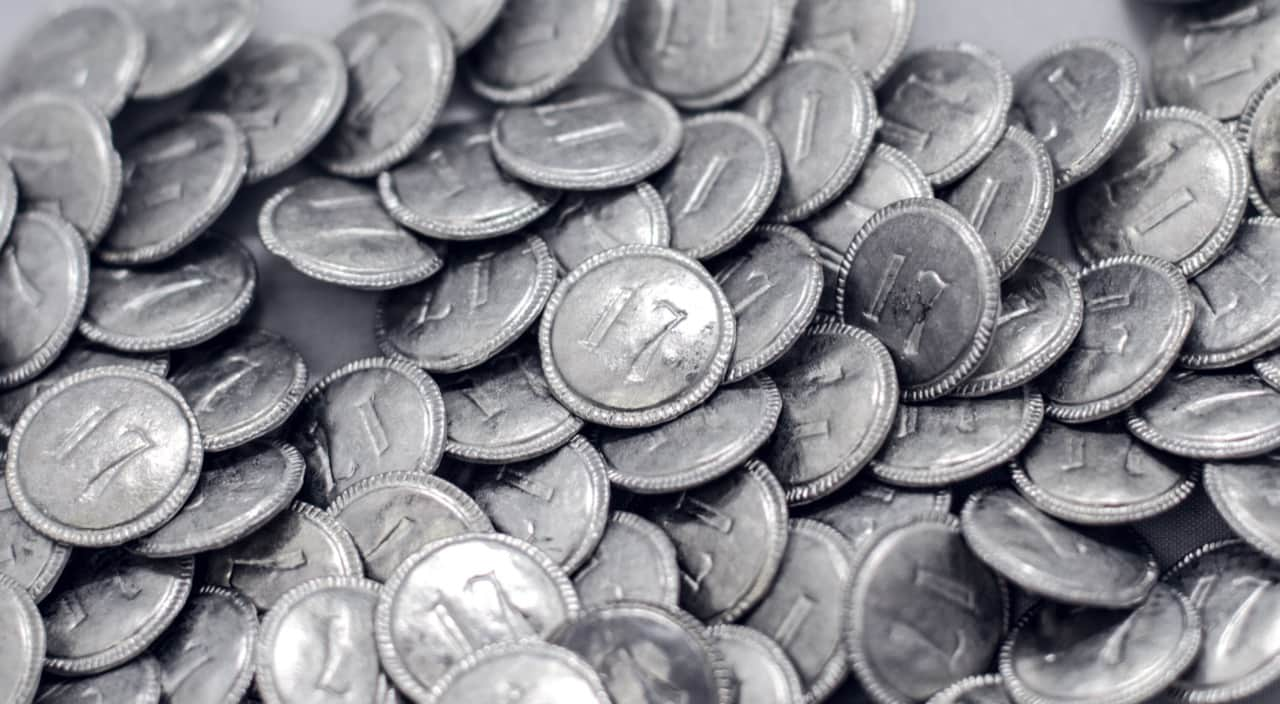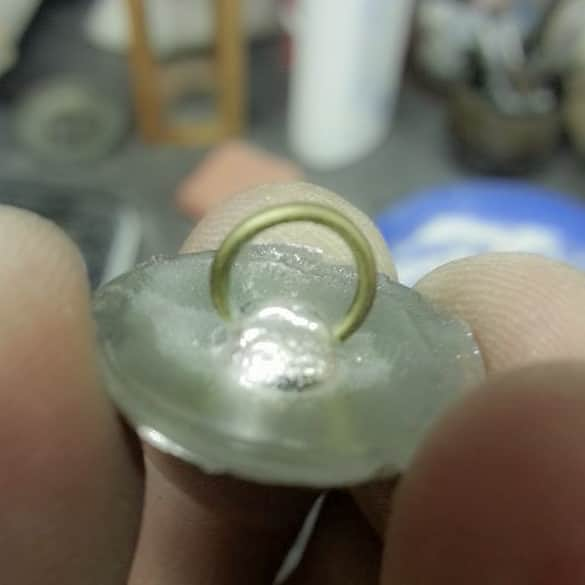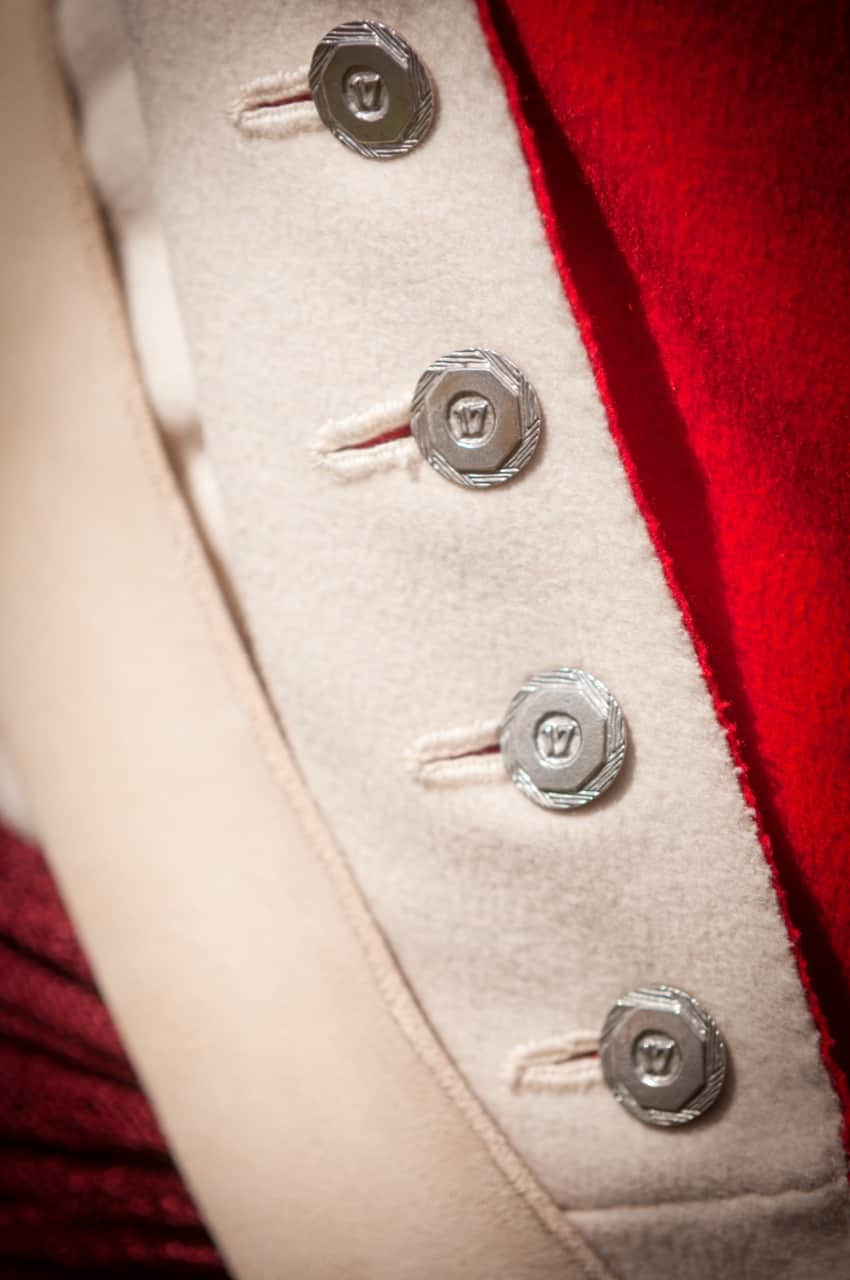Buttons of the 17th Regiment of Infantry
Alan Ball

Our primary evidence for 17th Regiment buttons in the American War of Independence comes from the excavation of several British camps in New York City and the Hudson River forts between 1907 and 1927, and many more metal detectorist finds in North America. The Inwood camp excavations were carried out by the military antiquarian and chairman of the New-York Historical Society's former Field Exploration Committee, William Loius Calver. Much of his findings were recorded in The Graphic in 1913 and later in the Green Tiger regimental magazine. Eventually, some of the buttons were presented to the regimental museum in Leicester.
Don Troiani and collaborators compiled a number of 17th Regiment buttons in several books on the topic, with photographs of the buttons and measurements. In addition, the Leicestershire Records Office keeps a document package containing original sketches of the excavated buttons from New York City which the author had access to in 2012.

Construction of the buttons conforms to several differnet types: other ranks buttons (privates, sergeants and corporals) are plano-convex and cast in white metal or pewter (lead-alloy); while officers buttons are silvered copper repousse, with a bone back.

Buttons are made in two sizes for the soldiers outfits: a larger sized button (21-24mm) for coats and hat cockades, and a smaller size (16-18mm) used for waistcoats and breeches. The appearence of a plain, flat button could indicate a specific button for the long cloth gaiters that are worn throughout the war, or fastening for haversacks, knapsacks and so on.
Buttons made of organic materials such as bone may have also been used for gaiters, and wooden button molds are known from the period for buttons covered in a cloth facing. There's a good chance that linen drawers or linen breeches and overalls had cloth-covered buttons.
A number of different designs of officer and other ranks buttons have been found. The discrepency in the sizes and motifs can be put down to the differing regimental agents who were tasked with aquiring clothing and equipment for the regiment, as well as an offier's personal tastes.

The officers buttons conform to a general design of raised “17” numerals in a recess cut wth a cross-hatch pattern. The border of the button has a “basket” border of incised lines cut at angles to form an octagon. One outlier has a “J” footed number one numeral.

Unsurprisingly, other ranks buttons have a simpler design. Other ranks buttons genaraly have the “17” numerals in relief on the domed surface of the button, with a “rope/cable” motif incised on the edges. There are also numerous examples of the numerals being recessed into the button face — this variation appears on both larger and smaller buttons, and it's impossible to discern which buttons went togther in a single outfit.

For our own reproductions of the other ranks buttons, we went with the raised numerals for the larger buttons (coats and hat cockades) and recessed for the smaller waistcoat and breeches buttons.


Another varient, not reproduced yet, is a possible sergeant's waistcoat button, also found at Inwood. This button, included in Insignia of Independence, is white-metal and has a raised wave border with thin numerals in relief.
Bibliography
- Troiani, D. (2001). Military Buttons of the American Revolution. Thomas Publications.
- Troiani, D. & Kochan, J. L (2012). Insignia of Independence: Military Buttons, Accoutrement Plates & Gorgets of the American Revolution. Thomas Publications.